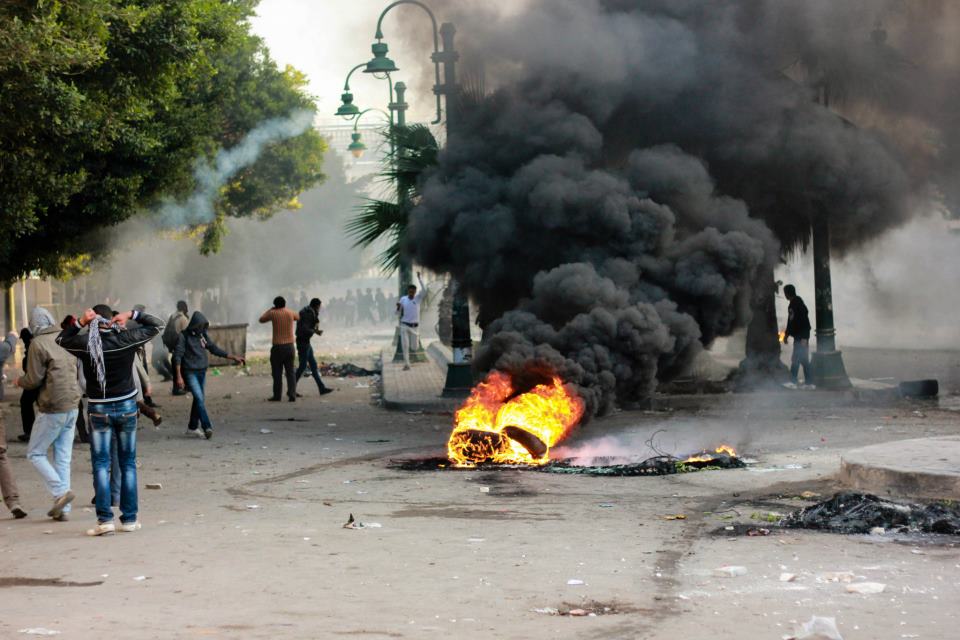CAIRO: Egyptian investigators said Saturday that technical failures likely caused a January 2004 crash of a passenger jet carrying French tourists from a Red Sea resort that killed all 148 on board, but a French team blamed the Egyptian crew, saying they failed to react quickly enough.
Transcripts from the cabin of Flash Airlines flight FSH604 showed confusion among the crew and problems in switching on the automatic pilot in the seconds after take-off from the resort of Sharm El-Sheikh before they realized the plane was veering sharply to the right and began trying to correct it.
The plane crashed into the waters of the Red Sea about three minutes after take-off. The Boeing 737 was carrying 134 French tourists returning home to Paris from the popular resort on the southern tip of the Sinai Peninsula, as well as a Moroccan and 13 Egyptians.
A press conference on Saturday announcing the results of the investigation showed flashes of testiness between the Egyptian and French investigators.
The report issued by the Egyptian commission heading the inquiry cited listed four possible causes for the Jan. 2 crash, all technical; a fault in the ailerons, whichcontrols the aircraft s roll; a temporary jam in either a cable or wheel in the left spoiler, a plate on the wing that regulates lift; or a fault in the mechanism for turning on the autopilot.
As an exacerbating factor, the report said that the Egyptian pilot, Khadr Abdullah, appeared to have disoriented about the plane s position as the craft apparently banked too far.
But Paul-Louis Arslanian, head of the team from France s Accident Analysis Bureau, told the press conference that the human factor had a large role in the accident, blaming the failure of the crew to quickly deal with the situation.
Shaker Kaladah, the head of the Egyptian investigation, disputed that, saying the crew s reaction was one of several factors … there is no direct evidence that the crew was the direct cause.
The human factor was studied by a team of psychological experts, and it was found that the human factor enters into the accident, but is not the sole cause, he said, adding that the French team s report was included in the final report issued by the investigation.
Though the report listed possible causes, it could not pin down a definitive reason for the crash. No conclusive evidence could be found … to determine a probable cause, it said. However, any combination of these findings could have caused or contributed to the accident.
The problem appears to have occurred about two minutes after takeoff, when the pilot requested the autopilot be switched on, according to transcripts released with the report. Five seconds later, the autopilot came on, and the plane began to bank left.
But after two seconds, the autopilot disconnected, and the ailerons began movements that put the craft in a bank to the right. See what the aircraft did, the pilot told his crew. The co-pilot informed him the plane was banking right. The pilot acknowledged, but seconds later said, How is it turning right?
During this period, the report said, an unusual event, apparently a technical fault, caused a distraction and the pilot appeared to have been disoriented over the plane s position.
In the next 17 seconds, the pilot may still have been disoriented as he tried to come out of the bank, the report said.
Ok, come out of the bank, the pilot said, and the roll to the right eases. But then the ailerons move again, putting the plane back into a deep right bank.
Over-bank; the co-pilot warned as the aircraft reached its highest altitude of 5,460 feet but then began to go down. The pilot repeatedly ordered the autopilot turned on, but it did not activate, even as the ailerons only deepened the roll to the right and the co-pilot repeatedly warned over-bank.
Finally, the plane began to correct its rightward roll. The pilot ordered the engines idled to reduce the speed and tried to pull out of the dive, but eight seconds later the craft hit the water.
Although the crew at the last stage attempted correctly to recover, the gravity of the upset condition in attitude, altitude in speed made this attempt insufficient to save the craft, the report said. AP


